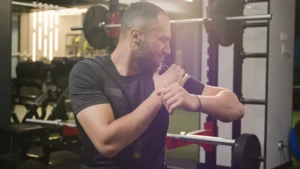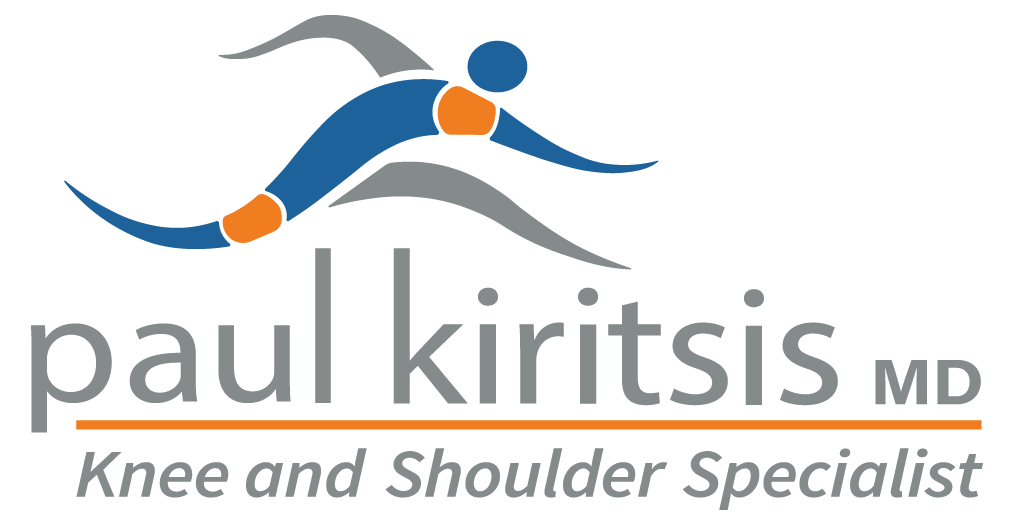Shoulder joint pain after exercise is a common issue that many face. This post discusses why it happens and offers practical tips for relief and prevention.
Key Takeaways
- Shoulder joint pain after exercise can arise from overuse, improper techniques, and chronic conditions; recognizing symptoms early is crucial to prevent further injury.
- Implementing immediate relief strategies like the RICE method and seeking medical attention for persistent pain can effectively manage shoulder discomfort.
- Long-term prevention of shoulder pain involves proper warm-ups, correct lifting techniques, and consistent strengthening exercises aimed at enhancing overall shoulder stability.
Understanding Shoulder Joint Pain After Exercise
Shoulder joint pain is a prevalent issue among regular gym-goers and weightlifters. The shoulder is a highly complex joint that allows for a wide range of motion, making it susceptible to injuries. Understanding the causes and symptoms of shoulder pain is helpful for anyone leading an active lifestyle, as it can affect your ability to perform everyday activities and enjoy physical exercise.
Addressing shoulder pain promptly can prevent further damage. Ignoring shoulder pain can lead to more severe injuries over time, potentially sidelining you from your favorite activities. Recognizing the signs and symptoms of shoulder pain can guide you in taking steps to maintain shoulder health.
Common Causes of Shoulder Joint Pain
Shoulder pain during exercise can stem from a variety of factors, including muscle overuse, improper lifting techniques, and chronic conditions. Weightlifters, in particular, are prone to shoulder pain due to incorrect weightlifting techniques and overexertion. Repetitive strain and poor form can lead to common shoulder injuries such as rotator cuff tears, tendonitis, and shoulder impingement.
Addressing these causes is important for effective pain management and prevention. Chronic overuse and incorrect techniques often result in conditions like rotator cuff tendinopathy, causing pain and discomfort in the shoulder.
Symptoms to Watch For
It’s important to monitor for specific symptoms that may indicate shoulder problems. Common signs include a dull ache or discomfort, particularly during overhead motions. If you find it difficult to sleep due to shoulder pain, this could be a sign of underlying issues that need attention.
Key Structures of the Shoulder Complex

The shoulder complex is a marvel of anatomical engineering, consisting of various bones, muscles, and tendons that work together to provide an extensive range of motion. This joint is unique in its ability to facilitate movements in multiple directions, making it essential for many activities.
The shoulder joint, a ball and socket joint, is supported by the rotator cuff muscles, which are vital for stability and movement. The intricate design of the shoulder complex allows for flexibility and strength, but it also makes the joint vulnerable to injuries.
Rotator Cuff Muscles and Tendons
The rotator cuff is a group of four muscles:
- Supraspinatus
- Infraspinatus
- Teres minor
- Subscapularis
These muscles play a critical role in shoulder stability and movement. They and their tendons are essential for performing a wide range of shoulder movements and maintaining shoulder strength.
Injuries to the rotator cuff, such as a rotator cuff tear, can significantly impair shoulder function and cause persistent shoulder pain.
Signs that warrant professional help from an orthopedic surgeon include swelling, increased pain, and difficulty moving the shoulder. It’s important to address these issues promptly to prevent further damage and ensure proper healing.
The Role of the Shoulder Blade
The shoulder blade, or scapula, plays an important role in shoulder movements and overall joint health. Its position and movement are essential for effective arm motion and maintaining joint stability. The shoulder blade provides a stable base for muscle attachment, facilitating a wide range of shoulder movements.
Proper positioning of the shoulder blade is important for maintaining a fit shoulder and preventing shoulder pain. Misalignment or restricted movement of the shoulder blade can lead to shoulder discomfort and injuries.
Common Shoulder Injuries from Exercise
Exercise, especially weightlifting, can lead to several common shoulder injuries. These include:
- Rotator cuff injuries
- Subacromial bursitis
- Pectoralis major tendon ruptures
- Long head of the biceps injuries
- Shoulder dislocations
Subacromial bursitis, for instance, is the inflammation of the bursa sacs in the shoulder joints, often leading to pain when lifting the arm overhead. Another common injury is a SLAP tear, a tear of the cartilage rim surrounding the shoulder socket, which can result from heavy lifting or a fall.
Knowing these injuries helps in taking preventive measures and seeking appropriate treatment when needed.
Rotator Cuff Tear
Rotator cuff tears are a common injury among those who engage in repetitive overhead activities or heavy lifting. These injuries often result from stress, tendon degeneration, or direct impact. Symptoms can manifest as a dull ache deep within the shoulder. Additionally, individuals may experience difficulty when attempting overhead movements.
Preventing a rotator cuff tear involves using lower resistance exercises, gradually increasing repetitions, and balancing workouts with arm raises and external rotations. Neglecting pain from repetitive overhead lifting can lead to tendonitis and possible rotator cuff tears.
Shoulder Impingement
Shoulder impingement occurs when the rotator cuff muscles are pinched between the shoulder blade and upper arm bone due to repetitive overhead movements. This condition causes mild pain that worsens over time and limits the range of motion. Activities involving raising the arms overhead can exacerbate the pain.
Treatment for shoulder impingement often includes physical therapy and cortisone injections. Temporarily replacing weightlifting with physical therapy helps avoid aggravating the condition. Recognizing and addressing shoulder impingement early can prevent more serious shoulder injuries.
Biceps Tendinitis
Biceps tendinitis is characterized by inflammation of the biceps tendon, resulting in shoulder pain and discomfort. This condition is often caused by repetitive motions that strain the biceps muscle in the shoulder. If left untreated, biceps tendinitis can negatively affect shoulder mobility and hinder daily activities.
Preventive measures include proper warm-ups, stretching, and avoiding excessive strain on the biceps tendon. Knowing the causes and symptoms of biceps tendinitis aids in taking steps to prevent this condition and maintain shoulder health.
Immediate Actions for Shoulder Pain Relief
Immediate actions to relieve shoulder pain and prevent further damage are crucial when experiencing discomfort. Implementing the RICE method (Rest, Ice, Compression, Elevation) can be highly effective. Over-the-counter medications and plenty of rest are also recommended for pain relief.
Assessing the cause of shoulder discomfort immediately after exercise is crucial for appropriate treatment. If shoulder pain persists after implementing home remedies, consult an orthopedic shoulder specialist for further evaluation. Taking immediate relief measures can help manage shoulder pain effectively and ensure a quicker recovery.
Rest and Ice
Rest is essential for alleviating muscle tension and inflammation in the shoulder. Avoiding intense physical activity during the recovery phase can prevent further damage to the shoulder. Cold therapy provides immediate relief by numbing sharp pain and reducing swelling. Applying ice soon after the onset of pain can optimize its effect.
Regular stretching of the shoulders is also important for relieving pain and maintaining flexibility. Combining rest and ice can be an effective strategy for shoulder pain relief.
Anti-inflammatory Medications
Anti-inflammatory medications, such as ibuprofen and naproxen, are commonly used to manage shoulder pain. These medications help reduce inflammation and relieve pain. Over-the-counter anti-inflammatory medication should be considered when pain affects daily activities, sleep, or is accompanied by swelling, bruises, or tenderness.
While NSAIDs can manage pain and reduce inflammation, they do not address the underlying cause of shoulder pain. Combining these medications with other conservative treatments can enhance their effectiveness in managing shoulder pain.
Long-term Strategies to Prevent Shoulder Pain
Preventing shoulder pain in the long term requires a combination of proper warm-ups, correct techniques, and strengthening exercises. Weakness in the shoulder can develop from insufficient exercise, leading to long-term issues. Consistent shoulder-strengthening exercises are very beneficial for injury prevention and maintaining shoulder health.
Starting an upper body routine with weights can improve overall shoulder strength and stability. Proper warm-ups and cooldowns are crucial for preventing common shoulder injuries in lifting weights.
Incorporating these strategies into your fitness routine helps avoid shoulder pain and promotes a healthier, more active lifestyle.
Proper Warm-up and Stretching
Warming up before exercise is essential to prevent shoulder injuries. Proper technique, full range of motion, warm-up exercises, and gradual progression in weight help prevent shoulder pain during weightlifting. Dynamic movements in warm-up sessions are important to prepare the shoulder for lifting.
Incorporating a proper warm-up routine with dynamic movements can significantly reduce the risk of shoulder injuries. Examples of effective warm-up exercises include arm circles, shoulder shrugs, and resistance band exercises.
Correct Technique and Form
Proper form during exercise prevents injuries and ensures efficient muscle targeting. Maintaining good posture and strengthening shoulder muscles contribute to shoulder stabilization during workouts.
A gradual increase in weight and intensity is important. This approach helps to prevent overloading the shoulder joint. Physical therapists can provide tailored exercises, emphasize proper techniques, and adapt daily activities to help you heal from shoulder pain. Focusing on correct technique and form prevents shoulder injuries and enhances overall fitness.
Strengthening Shoulder Muscles
Strengthening shoulder muscles is helpful for improving overall shoulder stability and preventing injuries. Incorporating exercises like planks and mobility drills can greatly enhance shoulder stability. Physical therapy focuses on exercises that restore range of motion and strengthen rotator cuff tendons.
Exercises for external rotation and enhancing biceps tendon and shoulder blade function can alleviate shoulder pain. Consistently strengthening shoulder muscles prevents pain and supports a more active lifestyle.
When to Seek Professional Help
Knowing when to seek professional help for shoulder pain is crucial for preventing serious injuries and ensuring proper treatment. If experiencing shoulder pain is accompanied by intense pain, sudden swelling, or an inability to move the arm, a medical consultation is necessary. Persistent pain, weakness, or difficulty moving the shoulder are also indicators that you should seek professional medical advice.
Early intervention can prevent further damage and facilitate a quicker recovery. Recognizing signs that warrant professional help ensures timely action and avoids long-term shoulder problems. Consulting a healthcare professional is essential for a thorough diagnosis and effective treatment plan.
Signs You Need Medical Attention
Certain symptoms indicate the need for professional assessment. Pain during overhead activities, stiffness, and difficulty sleeping due to shoulder pain are critical signs. Increased pain and decreased range of motion are also indicators that you should consult a healthcare professional. Persistent pain disrupting daily activities is a strong sign that intervention is necessary.
Never hesitate to seek medical advice if shoulder pain persists or worsens, as early intervention can prevent further damage. Identifying these symptoms early helps in obtaining necessary treatment and avoiding long-term shoulder issues.
Benefits of Physical Therapy
A physical therapist can offer personalized rehabilitation plans tailored to specific shoulder injuries. These plans often include exercises to restore range of motion, strengthen shoulder muscles, and improve overall shoulder stability.
Working with a physical therapist can help you recover from shoulder injuries and prevent future problems. A personalized approach ensures treatment is specific to your needs, providing the best outcome for shoulder pain relief and overall shoulder health.
Summary
In conclusion, understanding and addressing shoulder joint pain is essential for maintaining an active and healthy lifestyle. By recognizing the common causes and symptoms of shoulder pain, you can take proactive steps to prevent injuries and ensure proper treatment. Immediate relief strategies, such as rest, ice, and anti-inflammatory medications, can help manage pain effectively.
Long-term strategies, including proper warm-ups, correct techniques, and strengthening exercises, are crucial for preventing shoulder pain and maintaining shoulder health. Knowing when to seek professional help and the benefits of physical therapy can also aid in ensuring a quick recovery and preventing further damage.
Frequently Asked Questions
What are the common causes of shoulder joint pain after exercise?
Shoulder joint pain after exercise is often caused by muscle overuse, improper lifting techniques, rotator cuff tears, tendonitis, and shoulder impingement. It’s important to ensure proper form and allow adequate recovery to prevent these issues.
What symptoms should I watch for to identify shoulder problems?
Watch for a dull ache, discomfort during overhead movements, and pain that affects your sleep; these are key indicators of shoulder problems. If you experience these symptoms, consider consulting a healthcare professional for further evaluation.
How can I prevent shoulder pain during weightlifting?
To prevent shoulder pain during weightlifting, focus on proper warm-ups, use correct lifting techniques, gradually increase weights, and incorporate consistent shoulder-strengthening exercises. These practices will enhance your gym experience and protect your shoulders.
When should I seek professional help for shoulder pain?
You should seek professional help for shoulder pain if you experience intense pain, sudden swelling, persistent pain, weakness, or an inability to move your arm. Addressing these symptoms early can prevent further issues and promote better recovery.
What are the benefits of physical therapy for shoulder pain?
Physical therapy is highly beneficial for shoulder pain as it provides tailored rehabilitation plans that focus on restoring range of motion, strengthening muscles, and enhancing stability. This personalized approach promotes effective recovery and alleviates discomfort.





